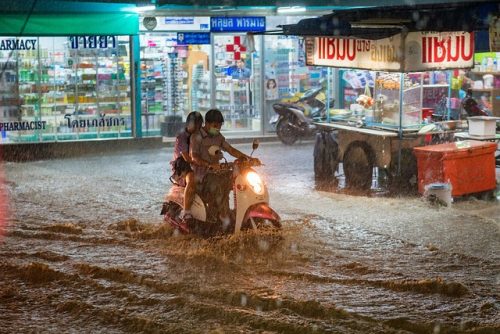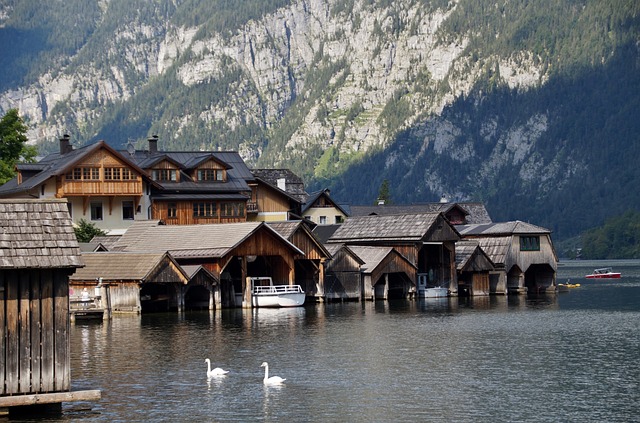Introduction: Climate Change and Increased bouts of Extreme Weather Events
Climate Change has lead to an alarming increase in extreme weather events like tornadoes, cyclones, floods, GLOFs and cloudbursts to name a few.
Extreme Weather Events are the result of atmospheric conditions on the extreme side of the weather. Although these cases of extreme weather events are not exclusively linked to climate change. They occur naturally as well. However, due to climate change the instances and frequency of their occurrence has become intense and more common. One such event that has become a huge concern are GLOFs, flash floods due to heavy rainfall patterns and the prolonged monsoon season duration along with catastrophic floods.
For further information read: Increasing Natural Disasters due to Climate Change
Flash floods are also of a concern in most urban cities where the heavy rains have resulted in the sewage and drain systems of the cities to fail as the volume of water is simply too much for it to handle and as a result there are flood-like situation on the streets of the city. They usually occur within 3 to 6 hours of heavy rain and with little prior notice that causes the rain water to accumulate on the surface. These unpredictable events increase in frequency due to climate change as we continue to pump emissions and global warming causing pollutants into the atmosphere. You can read more about flash floods here, Flash Floods- Causes, Effects, Prevention and Management

There also have been events of Glacial Lake Outburst Floods. As the Ice and Glaciers melt, the meltwater creates a lake which can be a vital source of drinking water for people, yet, there is also the concern about whether that water can harm nearby communities and populations and to what degree. So, for this purpose there are ice dams constructed which are for the purpose of containing the water if levels rise so that people are kept safe. However, in case the source glacier whose melting created the lake moves, or is fragmented by any source or event in the sea or its location or even just anything causing huge disturbances or waves in the lake that can cause the ice dams to break and cause GLOF. You may want to check out, Glacial Lake Outburst Floods In Pakistan- Causes and Effects
Some of the largest floods in the history of our planet have been caused by GLOFs and they have resulted in huge changes in landscape as well as changing entire climates of different regions due to the surplus release of freshwater into oceans.
But while climate change and its consequences are already happening, (as seen last year in Pakistan where it was hit by catastrophic floods and also the floods that ravaged Europe in 2021) we are in a dire need to curb the severity of these floods and other natural events.
For more info: Europe Floods 2021 due to Climate Change and How To Prevent Hazardous Monsoon Season Flooding in Pakistan
MEASURES TO REDUCE SEVERITY OF FLOODS – FLOOD MITIGATION METHODS:
There are some ways we can reduce the severity of the floods caused due to rising sea levels, coastal cyclones and increased rainfall patterns as well as irregular and rapid storms. Some of the measures that can be taken for the purpose of mitigating both floods and flash floods are mentioned below:
- Strong Infrastructure: Firstly we need to reduce the property damage and land loss. Strengthening our buildings and infrastructure is the first step to prepare for future undesirable events and it is most necessary as people will be able to come back once the water has been removed and they wont have to seek shelter or be displaced permanently. Moreover, strong infrastructure is a long term investment as well as a life time of safety insurance in any event because once the danger has passed, eventually people would be able to return to the building and salvage it rather than start construction from the very start. This will save not only time and cost of construction but also people will be able to redirect their efforts for more pressing post disaster management mitigation matters.
- Proper Sewage System: Developing proper stormwater drains and pipes to carry huge volumes of water away from the settlements will provide us with a good chance to reduce the damage caused by floods. In addition, sewage pipes need to be fitted with valves in order to prevent back flow or excess flood water.
- Acquisition of Equipment: Collecting and accounting for the equipment relevant to combat or mitigate huge volumes of water incase of a flash flood is crucial. These include dewatering pumps to remove water from the roads, streets and alleys and clear pathways.
- Alternative Construction: This utilizes building techniques especially in flood prone areas to reduce the loss of life, property and belongings. One such alternative is the use of Stilts. These stilts can raise the house on poles and keep them away from water. they are best for protection of houses and property incase of floods. They also keep out vermin or snakes that may be present in flood waters. Also, use of waterproofing substances in walls and floors of houses and buildings can lessen the damage.

- Constructing Dams: Using funds to make dams is the sure fire way of protecting populations from floods.
The consequences of floods on people, crops and property as well as land are inevitable however it is the duty of the government to minimize the damage as much as possible and to protect its people. The measures suggested above are just some of the more common and widely implemented ones in regions across the world where floods are common. Depending on the locality and region as well as the budget, the government needs to take the appropriate measures.
You may further like to read: Pakistan Flood Mitigation Measures and Disaster Management
We hope you liked this post! Please comment below if you have any suggestions, comments or feedbacks! We at #envpk love hearing from readers! Thanks




